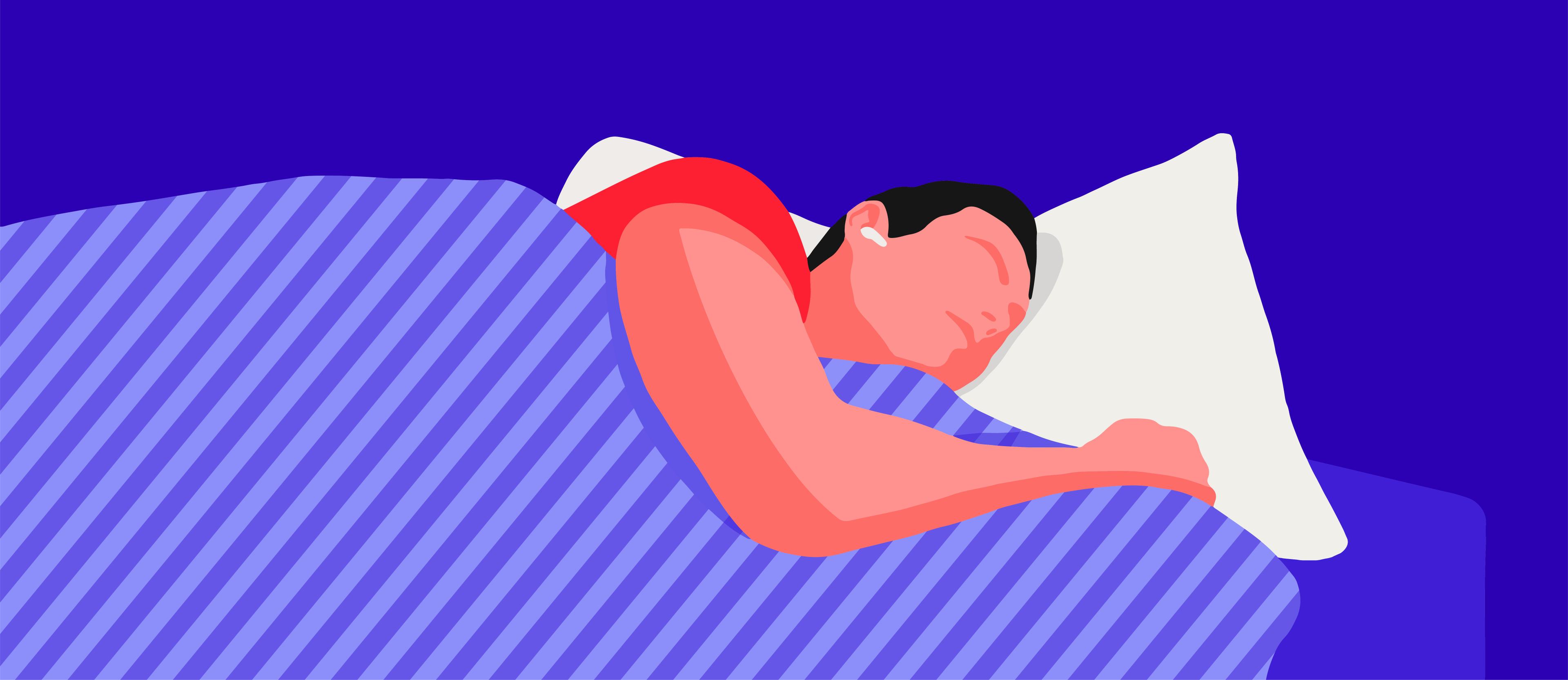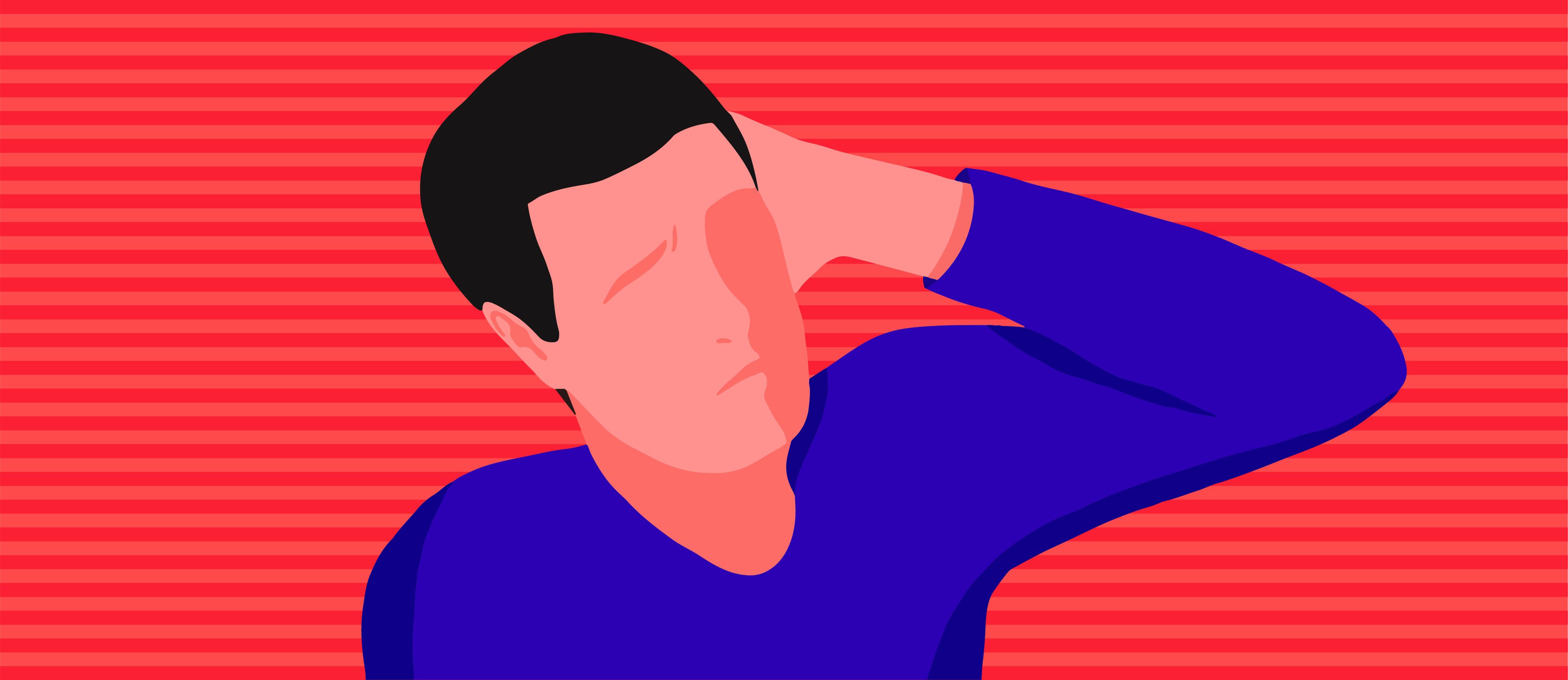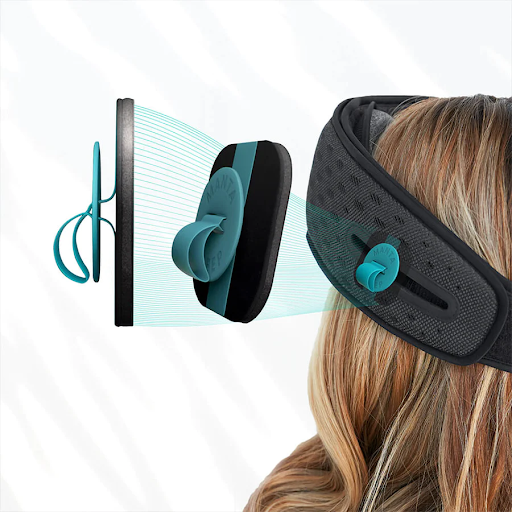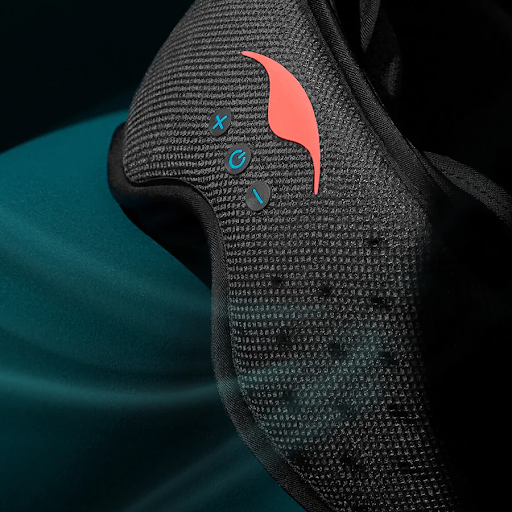Is It Bad to Sleep With Earbuds In: The Risks and a Good Alternative


An often-asked question is: “What is the link between sound and sleep?" The more obvious answer is that noise prevents people from falling and staying asleep. But for others, listening to soothing sounds and the different kinds of colored noise has the opposite effect.
There are several ways to listen to sleep-promoting sounds, such as sleep headphones, white noise machines, pillow speakers and the main topic of this article: wireless earbuds. Either you already own a pair or are considering it. You're also concerned about how safe it is to sleep with them overnight (and every night), and rightly so.
This article will discuss the risks of sleeping with earbuds and offer information on a safer alternative.
Key Takeaways
-
Sleeping with earbuds poses several health risks, including earwax buildup, ear infections and abrasions, and impaired hearing from extended sound exposure.
-
If you must sleep with earbuds, choose half in-ear models, keep the volume at 70 decibels or below, clean them regularly, and give your ears 18-hour breaks between extended use.
-
Bluetooth® sleep masks are a safer alternative because the speakers don't enter your ear canal while still delivering sound directly to your ears.
Table of Contents
Why Do People Sleep With Earbuds?
Getting a restful night of sleep can be tough with a snoring partner or the sound of blaring car horns from outside your window. Many people have reached the point where they consider shoving something in their ears to get some semblance of sleep. Who can blame them? And that's where wireless earbuds come in.
People choose to wear earbuds to sleep for several reasons:
-
To mask disruptive ambient noise and loud and sudden external noise with white, brown or pink noise for uninterrupted sleep
-
To calm racing thoughts and ease stress with relaxing sounds that alleviate anxiety and stress, helping with faster sleep onset
-
To experience the tingling calm of Autonomous Sensory Meridian Response (ASMR), delivering relaxing triggers more directly to the ears
-
To create a personal relaxation zone for shift workers in noisy environments during the day with noise-cancelling earbuds
Is It Safe to Sleep With Earbuds?


While it's generally safe to sleep with earbuds, there are some associated risks. There are two things to consider. First, you're putting foreign objects inside your ears, which can cause physical discomfort. Second, it isn't healthy to listen to loud noise for prolonged periods.
Before we start exploring the potential risks, note that there are two kinds of earbuds: in-ear and half-in-ear. In-ear earbuds usually have flexible silicone tips that go into the ear canal. Meanwhile, half-in-ear earbuds sit near your ear canal.
The Potential Risks of Sleeping With Earbuds
You Develop a Buildup of Earwax.
Wearing earbuds, regardless of type, can prevent air from circulating inside your ears, but one type more than the other.
In-ear earbuds could potentially lead to a buildup of earwax, which is more difficult and dangerous to remove, as it gets packed nearer your eardrums because of the design of the tips.
If you're going to buy a pair, choose half-in-ear earbuds. However, it won't mean that there's zero risk of earwax buildup.
You Get an Ear Infection From Excess Moisture.
Your ears contain a healthy combination of bacteria, moisture and earwax. (In fact, earwax protects your ears.) However, earbuds can seal off ventilation, which leads to excess moisture, creating an environment where bacteria thrive, resulting in a fungal or yeast infection.
Here are the symptoms to watch out for:
-
Stabbing ear pain and itchiness
-
Discharge
-
A clogged sensation
-
Nausea or a high fever
An example of this is swimmer's ear (also known as otitis externa), an infection of the outer ear canal that results from water that stays in the ear (often after swimming).
Healthline recommends cleaning your earbuds at least once a week with vinegar to prevent ear infections.(1) Also, go earbuds-free for 18 hours after use, so your ears have time to dry out.
An Infection Can Develop from Scratches on Your Skin.
According to the Cleveland Clinic, scratches to your ear canal caused by putting foreign objects in your ears increase your risk of developing otitis externa.(2) These breaks in the skin make the perfect breeding ground for bacteria.
The symptoms include:
-
Redness and swelling
-
Itching around your outer ear canal
-
Scaly flakes of skin that peel off
-
Sharp pain
-
High fever
-
Discharge
Prevent infections from scratches by choosing well-fitting earbuds. Use ones with silicone tips to minimize abrasions. Cleaning your earbuds regularly and taking breaks goes a long way.
You Risk Impairing Your Hearing.
As we mentioned earlier in this article, listening to loud sounds for extended periods can potentially lead to impaired hearing. According to the American Speech-Language-Hearing Association, listening to sound that's over 85 decibels for 8 hours can lead to hearing loss.(3)
Since earbuds are lodged inside the ears, you're more exposed to noise, even if it's lower than 85 decibels. Also, there will be nights when you'll sleep longer than 8 hours.
If you must sleep with earbuds, ensure the volume is 70 decibels or less. Seventy decibels is considered unlikely to impair your hearing. (However, the lower the volume, the better.) There's also a risk of earbuds damaging your ear canal as you switch positions throughout the night.
So, is sleeping with earbuds safe? From the looks of things, it doesn't sound promising. However, knowing the risks will help you take extra care if you decide to sleep with earbuds. Let's do a quick summary of safety reminders:
-
Consider half-in-ear earbuds since they don't go inside the ear canal.
-
Clean your earbuds after every use (or at least once a week).
-
Make sure to go earbud-free for at least 18 hours after prolonged usage.
-
Turn down the volume to 70 decibels or lower.
-
Use a sleep timer (if your earbuds offer this feature) to minimize time spent listening to sounds.
-
Avoid using wired earbuds (or in-ear headphones) that may wrap around your neck while you sleep.
How to Comfortably Sleep With Earbuds
If you're determined to sleep with earbuds, here are some tips to do so as comfortably as possible:
-
Choose the right earbuds specifically designed for sleep. Also, choose wireless ones with silicone tips.
-
Sleep on your back or avoid sleeping fully on your side to prevent earbuds from lodging deeply into the ears.
-
Keep the sound at a low volume of 70 decibels or lower.
-
Never share your earbuds. It isn't hygienic.
-
Listen to sounds that promote relaxation and good sleep quality, such as pink, brown or white noise, nature sounds or calming music.
-
Clean your earbuds at least once a week with an alcohol-free cleaner and a soft cloth.
Now that we've shared the lowdown on sleeping with earbuds, allow us to introduce you to a safer, more effective option: the Bluetooth® sleep mask.
The Best Alternative to Sleeping With Earbuds: A Bluetooth® Sleep Mask With Headphones
Bluetooth® sleep masks are a better alternative to earbuds and sleeping with headphones that are bulky.
In recent years, headbands with speakers have made a huge impact with their sleep-friendly features. First, they have external speakers that don't enter your ears. Second, they slip comfortably around your head. These key features mean they beat sleeping with earbuds, considering the risks we discussed earlier in this article.
What if we told you there's something even better when it comes to sleep and sound? Enter the Bluetooth® sleep mask with headphones.
Sleep headphones are a cool innovation that block out 100% light while delivering audio, creating a soothing environment for sleep. Does it sound too good to be true? Let us convince you!
Manta SOUND Mask (Previous Gen)

We designed Manta SOUND Mask (Previous Gen) for our customers, featuring a 100% light-blocking design and delivering superb sound quality. It also offers unbeatable comfort for side sleeping (and any other sleep position, too).
Here are its features:

-
Easy pairing with any Bluetooth®-compatible device
-
Fitted with razor-thin speakers, so there's no bulk
-
Adjustable speakers; just pull the tabs
-
Battery life of 20 hours (100% volume); 24 hours (50% volume)
-
Zero audible battery notifications to promote deep sleep

-
C-shaped adjustable eye cups that seal out light while offering zero eye and lash pressure

-
Intuitive volume controls at the front of the mask for easy adjustment
-
2-layer infinitely adjustable head strap made from perforated foam
-
An optional top strap to make it extra secure
-
Removable inner layer for easy washing
-
Soft, comfy and ultra-breathable materials
Manta SOUND Mask (NEW Gen)

Fast forward, and we've created a new and improved version, using feedback from our customers as the basis for its design.
It offers all the key features of its predecessor, plus a couple of improvements:

-
Fitted with ultra-thin speakers (4 mm), now padded for even more side-sleep comfort
-
Adjustable speakers that are removable for easy maintenance
-
Offers a battery life that lasts 20% longer than the previous gen Manta SOUND Mask; Battery life of 24 hours (100% volume); 30 hours (50% volume)

-
A single-layer elastic head strap with a 3D knitted mesh design for unbeatable breathability
-
An optional over-head strap that provides a more customizable fit
-
Designed to sit under the base of the skull to prevent upward and downward movement
-
Anti-slip silicone gel on the head strap for an extra secure fit
Conclusion
We hope this article answers your question: “Is it bad to sleep with earbuds in?” It has its risks, yes. But honestly, wearing them while you're awake shouldn't be a problem if it's not for too long and at a decent volume.
However, if you want to maintain good ear health while falling asleep to white noise or your favorite sounds, why not give a sleep mask with headphones a shot? Drop a comment below to let us and other readers know if it helps you get a peaceful night's sleep.
Frequently Asked Questions About Sleeping With Earbuds
Can I Sleep With Earbuds All Night?
Technically, you can sleep with earbuds all night. However, the potential risks outweigh the benefits. Wearing earbuds all night can block proper air circulation, push earwax deeper into your ear and increase your risk of ear infections and abrasions.
Can I Sleep With Earbuds Every Night?
It's not recommended to sleep with earbuds every night because it's associated with health risks such as ear infections and abrasions, impaired hearing and a buildup of stubborn earwax that's difficult and painful to remove. It's essential to give your ears a break from extended use (18 hours in between uses).
How Loud Should My Earbuds Be During the Night?
Your earbuds should have a low volume level of 70 decibels or below.
What Earbuds Are Best for Side Sleepers?
The best earbuds for side sleepers are earbuds with an ergonomic design that sit flush against the ears. They should also have silicone or memory foam tips to minimize abrasions.
Consider a Bluetooth® sleep mask with thin headphones that sits over the ears instead of inside them, such as Manta SOUND Mask (Previous Gen) or Manta SOUND Mask (NEW Gen). These eliminate pain from pressure points and infection risks.
Can Sleeping With Earbuds Damage My Hearing?
Sleeping with earbuds can cause hearing damage with prolonged periods of use at a sound level of over 70 decibels, so keep the volume low.
Can Sleeping With Earbuds Cause an Ear Infection?
Sleeping with earbuds can cause ear infections by trapping moisture in the ears and preventing proper air circulation. These conditions create an environment where bacteria thrive, potentially resulting in an ear infection.
Can I Accidentally Swallow My Earbuds if I Sleep With Them In?
You cannot accidentally swallow your earbuds in your sleep. Standard earbuds are too large to be swallowed by accident. Their size will trigger your gag reflex even during sleep, waking you up to expel the earbuds.
Sources:
(1) “How Often Should You Clean Your AirPods and Earbuds?” Healthline, www.healthline.com/health-news/how-often-should-you-clean-your-airpods-and-earbuds. Accessed 01 August 2025.
(2) “Swimmer’s Ear (Otitis Externa).” Cleveland Clinic, my.clevelandclinic.org/health/diseases/8381-swimmers-ear-otitis-externa. Accessed 01 August 2025.
(3) “Loud Noise Dangers.” American Speech-Language-Hearing Association, www.asha.org/public/hearing/loud-noise-dangers. Accessed 01 August 2025.
Disclaimer: The information contained in this website or provided through our blog, e-mails, or programs is for informational purposes only. It is not intended to be a substitute for medical advice, diagnosis or treatment that can be provided by your healthcare professionals.












































